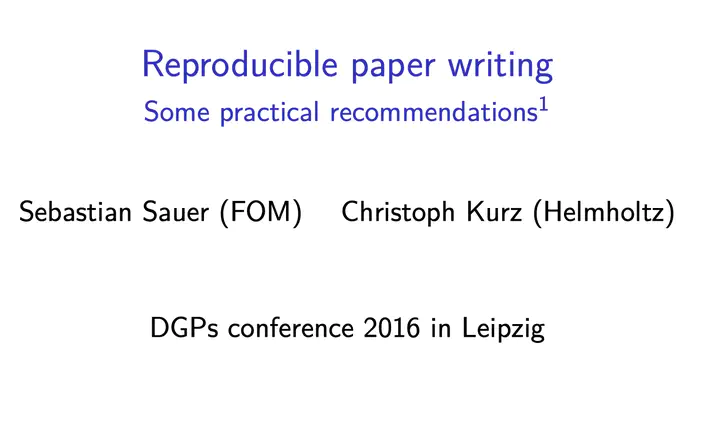 Title Cover by Sebastian Sauer
Title Cover by Sebastian Sauer
Abstract
Reproducible Paper Writing
Scientific publications should both announce a result and convince readers that the result is correct (Mesirov, 2010). Reproducibility refers to methods which help the reader to convince themselves by own means that a given result is plausible, at least. Thus, reproducibility, as opposed to replicability, is particularly important because successfully replicating a study is not neccessarily possible even if the study was well conducted (Peng, 2015). In any case, a reanalysis of the data must result in similar or identical results.
The current “reproducibility crisis” (Open Science Collaboration, 2015) is partly due to a lack of technical and statistical skills (Peng, 2015). Thus better technical skills for reproducible paper writing and data analyses may provide a remedy to the reproducibility crisis. In this talk, we present a method that is well-suited for writing reproducible academic papers. This method is a combination of Latex, R, Knitr, Git, and Pandoc. These software tools are robust, well established and not more than reasonable complex. Additional approaches, such as using word processors (MS Word), Markdown, or online collaborative writing tools (Authorea) are presented briefly. The presentation is based on a practical software demonstration. A Github repository for easy reproducibility is provided.
REFERENCES
Mesirov, J. P. (2010). COMPUTER SCIENCE. Accessible Reproducible Research. Science, 327(5964), 10.1126/science.1179653. http://doi.org/10.1126/ science.1179653
Open Science Collaboration. (2015). Estimating the reproducibility of psychological science. Science, 349(6251). http://doi.org/10.1126/science.aac4716
Peng, R. (2015). The reproducibility crisis in science: A statistical counterattack. Significance, 12(3), 30–32. http://doi.org/10.1111/j.1740-9713.2015.00827.x